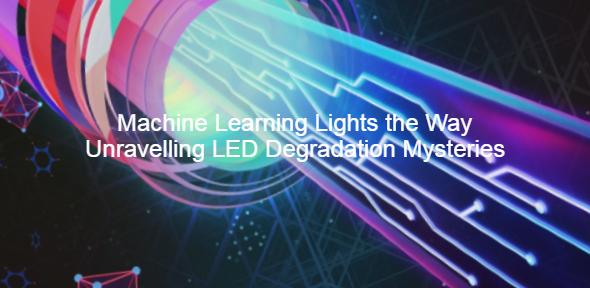
Researchers from the Department of Chemical Engineering and Biotechnology (CEB), led by Professor Sam Stranks and Dr Kangyu Ji have uncovered the secrets behind the degradation of cutting-edge Light Emitting Diode (LED) technology, paving the way for more durable and long-lasting devices in the future.
Emerging LED materials known as halide perovskites have shown promise for their efficiency, colour purity, and brightness. But, they have a major drawback due to their vulnerability to deterioration over time. Understanding this ephemeral glow of perovskites has been a challenge for the scientific community for some time.
Using a novel technique based on machine learning, the team at CEB has identified a key reason for this decline. It turns out that the materials suffer from "lateral ion migration". In simple terms, this means, tiny charged particles within the blue LED move in unexpected ways when electricity is applied, causing them to degrade faster. Traditional methods of observation of this phenomenon are akin to deploying outdated cameras to snap high-speed races—resulting in blurred outcomes leaving researchers clamouring for clarity.
A solution to this problem has now been found with the ground-breaking discovery made possible through a self-supervised machine learning denoising model. The innovative method allowed CEB researchers to see problems in the LED that standard imaging methods would miss. By using this new method, CEB scientists captured rapid and detailed images of the blue LEDs under operation, highlighting areas where degradation was most likely to occur.
"While our research was using blue perovskite LEDs, the implications of this imaging technique go much further. Imagine trying to capture a clear picture in the dimmest of lighting. This is a situation where you're starved of the necessary light or photons to get a clear shot. The new technique can turn these unclear images into crisp visuals in a very efficient manner."
"This approach will also have applications for areas including satellite imaging or medical scans where clarity is crucial. Even in situations where initial images are clouded with noise, this method can transform them into sharp images," Professor Sam Stranks, Professor of Optoelectronics at CEB and head of the Materials and Device Spectroscopy Group (StranksLab)
Further, the model isn't just about clarity. It is also about speed. As Kangyu Ji, PhD student in Stranks’ group and lead researcher of the paper, put it, “Degradation occurs rapidly in these emerging LEDs, beyond the capabilities of a standard microscope. With our model, we can significantly reduce the exposure time to just 10% of the standard protocol while maintaining high data quality.”
The insights gained could revolutionise the future of lighting and displays. As industries are keen to adopt more energy-efficient technologies, understanding the pitfalls of these materials is essential. With this new knowledge, manufacturers could potentially design LEDs that last longer, saving both energy and money for consumers.
The world of tech often finds itself on the brink of significant evolutions, and with these discoveries, the dawn of a brighter, more sustainable LED era might just be on the horizon.
Read the full Chemical Engineering and Biotechnology Departmental article
Kangyu Ji, Weizhe Lin, Sam Stranks et al. ‘Self-supervised deep learning for tracking degradation of perovskite light-emitting diodes with multispectral imaging.’ Nature Machine Intelligence (2023). DOI: 10.1038/s42256-023-00736-z

